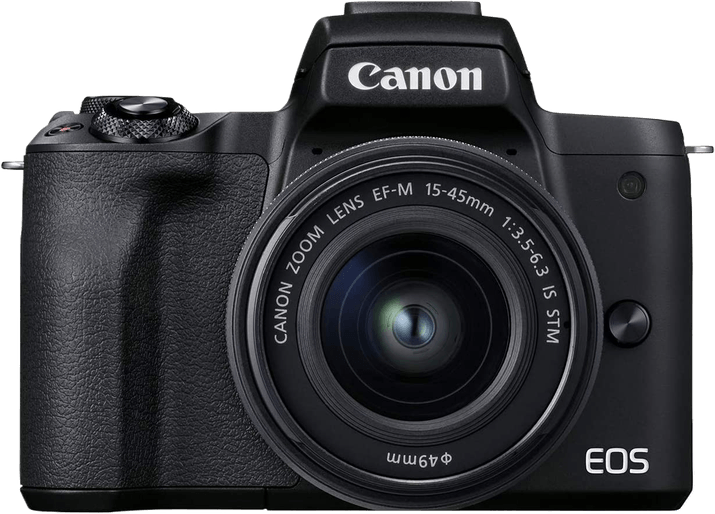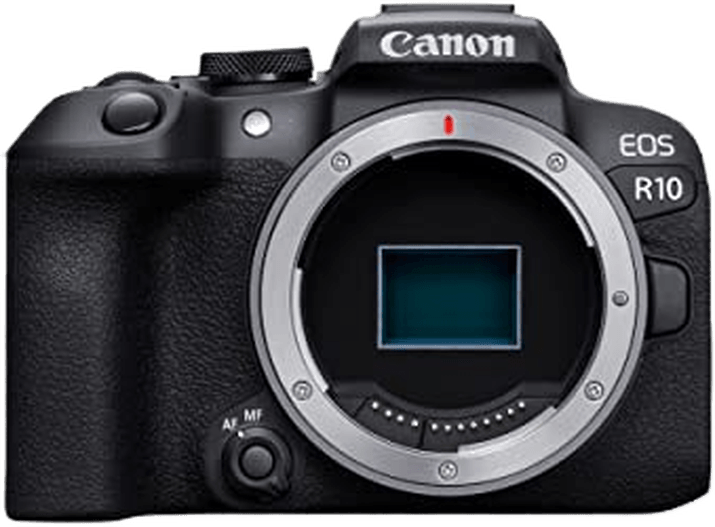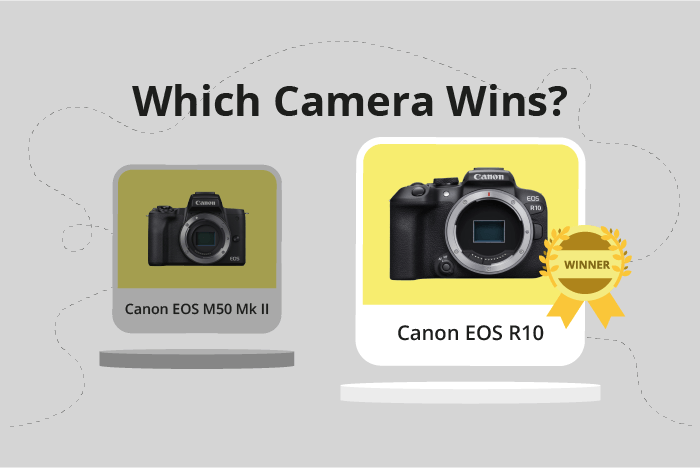Canon EOS M50 Mark II vs EOS R10 Comparison
Canon EOS M50 Mark II

Canon EOS R10

The Canon EOS R10 outperforms the Canon EOS M50 Mark II with a score of 69/100 compared to 59/100. Both cameras are mirrorless and were released in 2020 and 2022, respectively. They share similar dimensions, with the R10 being slightly larger at 123 x 88 x 83mm and heavier at 426g, compared to the M50 Mark II’s 116 x 88 x 59mm and 387g.
The EOS R10’s higher score indicates it offers better overall performance. Its advantages include improved features and more recent technology, justifying its higher launch price of $980 compared to the M50 Mark II’s $750.
The EOS M50 Mark II, however, is not without its merits. It is a more compact and lightweight option, making it easier to carry around for longer periods. This could be an essential factor for some photographers.
Ultimately, the Canon EOS R10 is a superior camera with better performance, while the Canon EOS M50 Mark II offers a more affordable and portable alternative. Choose the one that best suits your needs and budget.
Canon EOS M50 Mark II vs EOS R10 Overview and Optics
The Canon EOS R10 wins in the optics comparison with a score of 71/100, while the Canon EOS M50 Mark II scores 59/100. Both cameras share some common specifications, such as having 24 megapixels, a CMOS sensor, APS-C sensor size, and no image stabilization.
The EOS R10 outperforms the M50 Mark II in several aspects. Its shooting speed of 15 frames per second (fps) is faster than the M50 Mark II’s 10 fps, allowing for better continuous shooting. Furthermore, the R10 has a superior processor, the Digic X, compared to the M50 Mark II’s Digic 8 processor. This results in better image processing and overall performance. Additionally, the R10’s DXOMARK score for the sensor is significantly higher at 97, compared to the M50 Mark II’s score of 58, indicating better image quality and low-light performance.
On the other hand, the M50 Mark II has a different lens mount, the Canon EF-M, compared to the R10’s Canon RF mount. While this does not necessarily make the M50 Mark II better, it does provide an alternative for users who may already have Canon EF-M lenses.
Taking these differences into account, the EOS R10 proves to be the superior camera in terms of optics. Its faster shooting speed, advanced processor, and higher DXOMARK sensor score contribute to its higher overall score. Meanwhile, the M50 Mark II offers an alternative lens mount option for those with existing Canon EF-M lenses, but this does not outweigh the advantages of the R10.
Canon EOS M50 Mark II vs EOS R10 Video Performance
When comparing the video capabilities of the Canon EOS M50 Mark II and the Canon EOS R10, both cameras have a tie with a score of 91 out of 100. These cameras share several common features, making them equally impressive in terms of video performance.
Both the Canon EOS M50 Mark II and the Canon EOS R10 have a maximum video resolution of 4K and dimensions of 3840 x 2160, providing high-quality video recording. They also both support a maximum video frame rate of 120fps, allowing for smooth and detailed slow-motion footage. Additionally, both cameras have built-in time-lapse functionality, making them suitable for creating stunning time-lapse videos.
Since both cameras have the same video score and share common specifications, it is difficult to determine a clear winner in terms of video capabilities. However, it is essential to consider other factors such as user experience, ergonomics, and additional features when choosing between these cameras.
There may be instances where one camera has a slight advantage over the other, depending on individual preferences and specific use cases. It is crucial to research and compare other aspects of the cameras before making a final decision, as the video capabilities are evenly matched.
To conclude, both the Canon EOS M50 Mark II and the Canon EOS R10 have impressive video capabilities with no significant differences. The choice between these cameras should be based on other factors and personal preferences since their video performance is equally exceptional.
Canon EOS M50 Mark II vs EOS R10 Features and Benefits
The Canon EOS M50 Mark II and the Canon EOS R10 both have a feature score of 70/100. This means that there is no clear winner in terms of features, as both cameras have the same score.
Both cameras share several specifications. They both have a 3-inch screen size and a screen resolution of 1,040,000 dots. Additionally, both cameras have a touchscreen, a flip screen, WIFI, and Bluetooth capabilities. Neither camera has GPS functionality.
Since both cameras have the same feature score, it is challenging to determine which camera is better based on their shared specifications. However, it is essential to consider other factors, such as price, user experience, and personal preferences, when choosing between the two cameras.
While there is no clear winner in terms of features, it is possible that one camera may have advantages over the other in different areas. For example, the Canon EOS M50 Mark II may have a more user-friendly interface or a better lens selection. On the other hand, the Canon EOS R10 may offer superior image quality or more advanced video capabilities.
Ultimately, the choice between the Canon EOS M50 Mark II and the Canon EOS R10 will depend on individual needs and preferences. Both cameras offer a solid set of features, making them suitable for various photography styles and skill levels. It is necessary to evaluate other factors, such as price and user experience, to determine which camera is the best fit for your specific requirements.
Canon EOS M50 Mark II vs EOS R10 Storage and Battery
The Canon EOS R10 outperforms the Canon EOS M50 Mark II in storage and battery with a score of 40/100 compared to the M50 Mark II’s 21/100. Both cameras share similarities, such as having a single memory card slot and supporting SD, SDHC, and SDXC cards with UHS-I compatibility.
The EOS R10’s superiority lies in its longer battery life and USB charging capabilities. With 450 shots per charge, the R10’s LP-E17 battery lasts notably longer than the M50 Mark II’s LP-E12 battery, which only provides 305 shots. Additionally, the R10 offers the convenience of USB charging, a feature the M50 Mark II lacks.
Despite its lower score, the M50 Mark II still provides decent storage and battery performance. However, it falls short when compared to the R10’s capabilities. Ultimately, the Canon EOS R10 proves to be the better choice for those prioritizing storage and battery efficiency.
Alternatives to the Canon EOS M50 Mark II and EOS R10
Are you still undecided about which camera is right for you? Have a look at these popular comparisons that feature the Canon EOS M50 Mark II or the Canon EOS R10:

